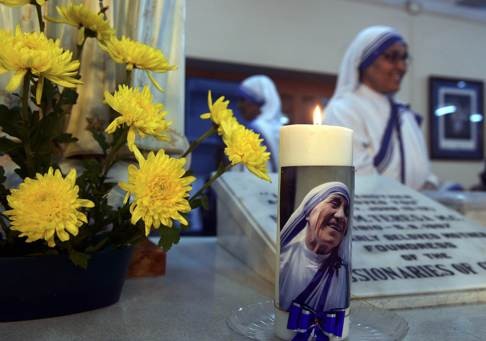
Why the heavenly status of Mother Teresa lies in her work on earth
Priya Virmani says saints are seen as such because of the people they help during their lifetimes, not for any miracles ascribed to them posthumously, and it is time for the idea of sainthood to be challenged

As 2015 draws to a close, the Vatican has announced that a second miracle attributed to Mother Teresa – the recovery of a Brazilian man suffering from multiple brain tumours – has been recorded, paving the way for her canonisation next year.
I knew Mother Teresa from when I was a child until her death in 1997. I was struck by the kindness that emanated from her eyes towards everyone she met, including her fiercest critics. Her small frame belied her unstoppable energy. When people greeted her, she would clasp their hands with radiant joy, be they beggars, street dwellers, journalists, VIPs, volunteers or members of the public. With children and the severely ill, her embrace would be at its fullest.

Hers was an arduous life – she barely ate, and ate simply. She would sleep for four hours a day. A tiny room, more like an immaculate, spartan cell, was her home. She would mend her clothes, slippers and cloth bag to reuse them. Yet her energy when it came to her work was untempered and her positivity relentless.
As a schoolgirl, I volunteered in Shishu Bhavan, the orphanage in Calcutta run by her order, the Missionaries of Charity. I vividly recall how the aura of the place would alter when Mother Teresa was in town and would visit. The orphanage had differently abled children, and each time I was struck by their responses to Mother Teresa’s presence. Their smiles would be wider, their joy palpable. To me, that was an unequivocal miracle.
What she enabled in her lifetime is what makes her a saint – the miracle lies in her ability to be ordinary yet achieve the extraordinary
Her visitors were often taken aback and infected by her easy cheerfulness. Her recall of her meeting with Hillary Clinton had us all laugh out loud. She narrated how Clinton gave her a card that spelt out her formidable credentials and she responded, “I can’t not give you my card in return,” and to the amusement of Clinton, Mother Teresa handed over her little yellow visiting card that began “The fruit of silence is prayer...”
She had many detractors. In India, she is embroiled in controversy to this day – a large swathe of the country reduces her work to proselytising. The conditions of some of her homes and the way in which help is administered to the needy have been pilloried. Yet, there is no story to parallel or equal Mother Teresa’s journey: a nun on the streets of a city crowded with the poor, with no educational or monetary swagger but with a single-minded conviction and faith, set up over 450 charitable centres around the world.

What she enabled in her lifetime is what makes her a saint – the miracle lies in her ability to be ordinary yet achieve the extraordinary. Do we need supernatural incidences to ascribe sainthood?
At present, the eligibility criteria for sainthood are two Vatican-recognised, posthumous miracles ascribed to the person. The politics of achieving sainthood by the Vatican are multifarious but it is time for the very notion to be shaken from its lofty pedestal and brought down to earth – just like Mother Teresa who worked tirelessly on the ground to make a difference.
Dr Priya Virmani is a political and economic analyst